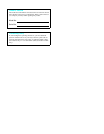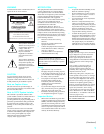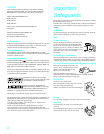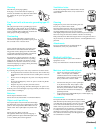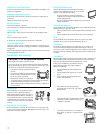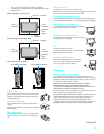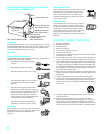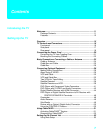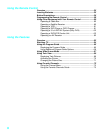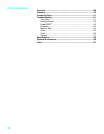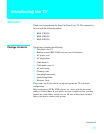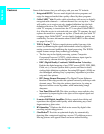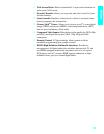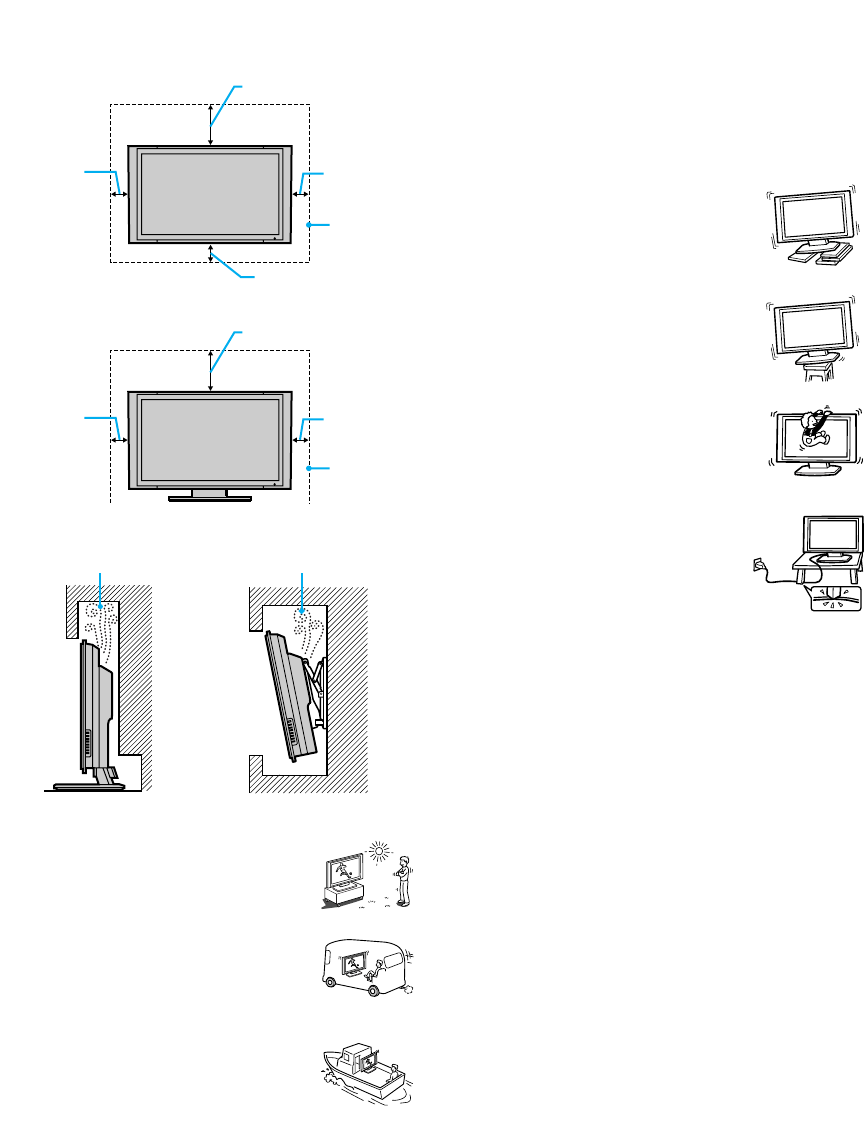
5
s Leave some space around the unit. Otherwise, adequate
air-circulation may be blocked causing overheating and cause fire or
damage the unit.
Outdoor use
Do not install this unit outdoors. If the unit is exposed to
rain, it may result in fire or electric shock. If the unit is
exposed to direct sunlight, the unit may heat up and it
may damage the unit.
Vehicle and ceiling
Do not install this unit in a vehicle or hung from the
ceiling.
Bumping of the vehicle may cause the unit to fall down
and cause injury.
Ship and vessel
Do not install this unit in a ship or vessel. If the unit is
exposed to seawater, it may cause fire or damage the
unit.
AC power cord
Unplug the AC power cord when moving the unit.
Do not move the unit with the AC power cord plugged in. It may damage
the AC power cord and result in fire or electric shock.
Preventing from toppling over
Take measures to prevent the unit from toppling over and causing injury.
To prevent the unit from toppling over, secure the unit to the wall or pillar.
Installing on a level surface
If you install the unit on an inclined surface, the unit may
fall or drop and cause injury or damage.
Placing on a stable surface
If you place the unit on an unstable surface, the unit may
fall and cause injury or damage.
Fall
Do not hang anything on the unit.
The unit may fall from the stand or wall-mount unit,
causing damage or serious injury.
Power-Cord Protection
Do not allow anything to rest on or roll over the
power cord, and do not place the unit where the
power cord is subject to wear or abuse.
Antennas
Outdoor Antenna Grounding
If an outdoor antenna is installed, follow the precautions below. An
outdoor antenna system should not be located in the vicinity of overhead
power lines or other electric light or power circuits, or where it can come
in contact with such power lines or circuits.
WHEN INSTALLING AN OUTDOOR ANTENNA SYSTEM,
EXTREME CARE SHOULD BE TAKEN TO KEEP FROM
CONTACTING SUCH POWER LINES OR CIRCUITS AS CONTACT
WITH THEM IS ALMOST INVARIABLY FATAL.
Be sure the antenna system is grounded so as to provide some protection
against voltage surges and built-up static charges.
Section 810 of the National Electrical Code (NEC) in USA and Section 54
of the Canadian Electrical Code in Canada provides information with
respect to proper grounding of the mast and supporting structure,
grounding of the lead-in wire to an antenna discharge unit, size of
grounding conductors, location of antenna discharge unit, connection to
grounding electrodes, and requirements for the grounding electrode.
When installing the unit on the wall
Allow this
much
space.
When installing the unit using a stand
Allow this
much
space.
30 cm (11
7
/8 inches)
10 cm
(4 inches)
10 cm
(4 inches)
10 cm
(4 inches)
10 cm
(4 inches)
30 cm (11
7
/8
inches)
10 cm
(4 inches)
Never install the unit as follows:
Air circulation is blocked.
Air circulation is blocked.
(Continued)




